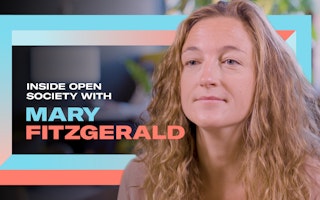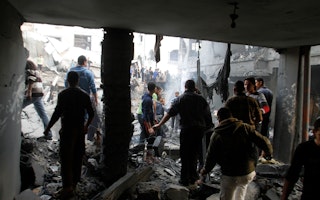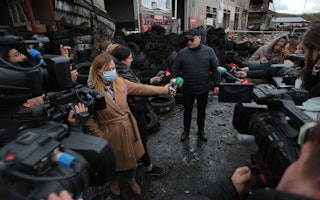Q&A: Designing for Human Rights

For rights activists trying to raise awareness about a specific issue or crisis, a published report has long been a go-to tool. Increasingly, however, the field is moving toward an embrace of digital innovations. The Open Society Information Program’s Elizabeth Eagen spoke with Brad Samuels, research director at SITU, a New York City–based design firm, about how they develop new tools to support rights campaigns.
You are an architect. Don’t architects usually design buildings?
I get this question a lot. Architects, and designers more broadly speaking, are actually well-suited to do social impact work. An architect has to take something and describe it in space accurately. What we do is take complex problems and present them in ways that are understandable and accessible.
An architect is also often the project leader of a team of people who work across disciplines. So, when we have a human rights project, it is often about describing a thorny, hard-to-understand issue and bringing together a group of people with disparate skills to find a way to present it accurately and clearly.
Who is on your team?
Our team here at SITU research is a host of people from different backgrounds: urban planners, computer scientists, geographers, designers. And each of our projects relies heavily on intensive collaboration, whether with community organizers, subject matter experts, human rights lawyers, or other stakeholders with relevant skills and insights. For example, we just did a project with lawyers, computer scientists, developers, and a weapons specialist.
A weapons specialist?
Yes! We helped build a tool, used in a Ukrainian court, to try to understand what took place on Feb 20, 2014, when the Berkut, a special unit of Ukrainian police, allegedly killed 47 protesters. Five policemen were going to trial for these killings, and the question several human rights lawyers came to us with was: we have all this video evidence, can you help us understand what happened on that day?
This was what we’d call a chaotic data set. There were hundreds of hours of footage captured from the protesters themselves, but also from security cameras and journalists. From the perspective of some, there was almost too much footage. It was hard to make any sense of it.
What did you do?
We were able to create a digital environment that situated the videos in relation to each other, so it was possible to surface key facts about what happened, bringing formerly inscrutable evidence to light. Embedded in the videos were bits of information that could be pieced together and interpreted by pathologists and ballistic experts. For example, we asked weapons specialists to listen to the sound of the shots fired and make judgments about where the shots did—and did not—likely come from.
Does your team work on public education campaigns too?
Yes. We are working with Amnesty International right now on a campaign to end the misuse of “less-lethal” weapons.
At the moment, we’re focused on a case in Iraq where police and security forces have been using weapons like tear gas in ways that are lethal. Instead of shooting tear gas, for example, into the air at a high angle—as is consistent with best practices—the police have been shooting straight at protesters, often killing and severely injuring them.
What did your team to do to help stop these practices?
First, we looked at the research on the use of these weapons, and we discovered a meaningful gap. Most of the research reflects what is commonly agreed upon as the proper use of the weapon—not what happens if you use them inappropriately. So, we set out to document what happens if you use these weapons in the wrong way.
We started by creating a digital simulation to quantify the force of one of these weapons and show the impact it would have if shot at people at various angles. Working in close consultation with a ballistics expert, we developed a digital model that would show the impact these weapons would have if shot at people in an improper way.
What is next for SITU?
I am particularly excited about a project we have supporting a number of children who are suing the federal government for its mismanagement of the climate crisis. Working with them, we show the impact on their neighborhoods of sea level rise. For some of these kids, they are looking at situations where, a few decades down the line, their homes may be underwater.
We have a lot of other things going on. It’s a bit overwhelming. But also exciting to have such a direct impact on the way that these human rights challenges are litigated and understood.
SITU is a grantee of the Open Society Foundations.


